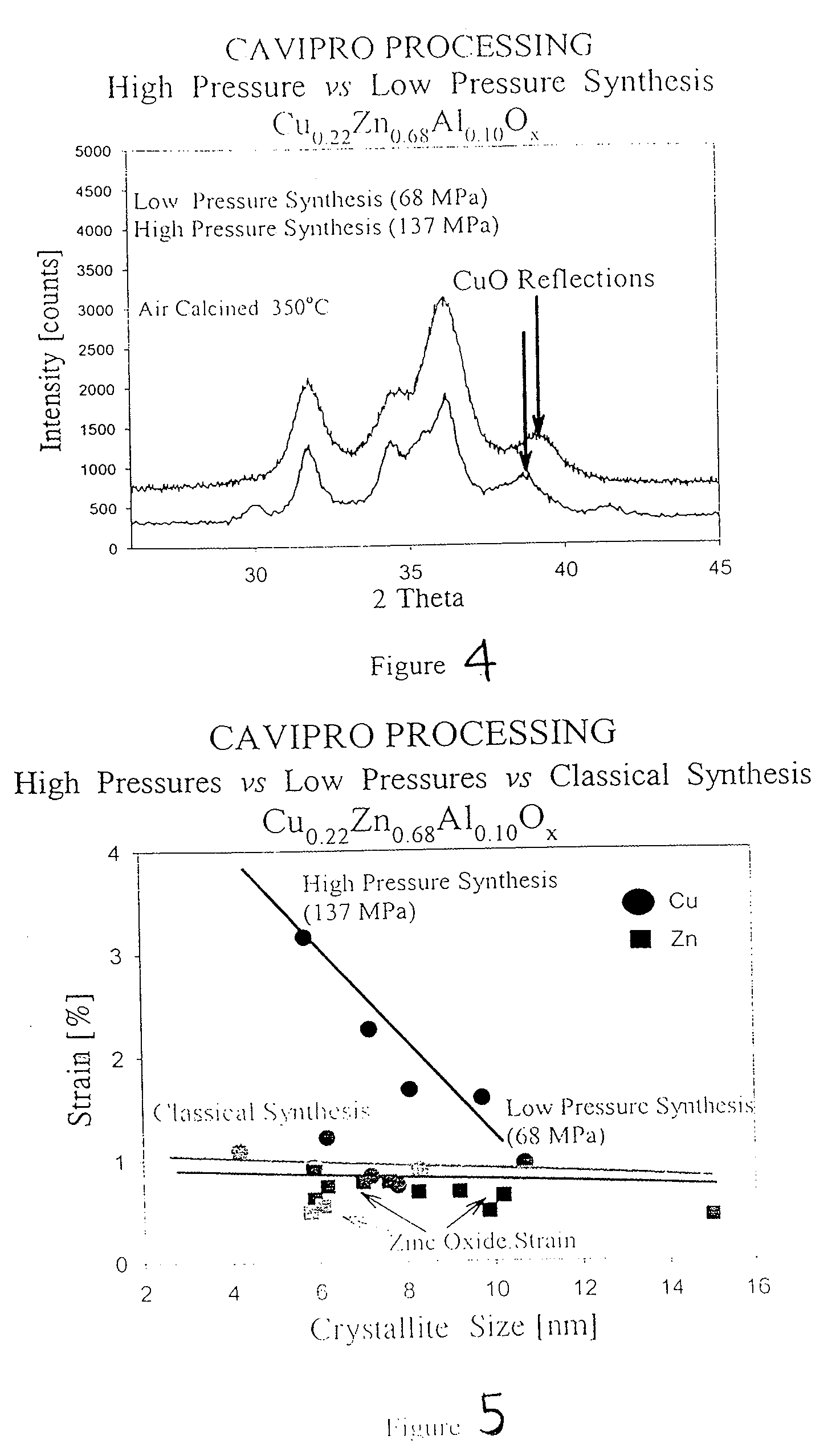Method of preparing compounds using cavitation and compounds formed therefrom
a technology of cavitation and compounds, applied in the field of preparation of compounds using cavitation and compounds formed therefrom, can solve the problems of large pressure impulses and elevated temperatures, inability to control the cavitation effect limit the results obtained, and decomposition of metal salts
- Summary
- Abstract
- Description
- Claims
- Application Information
AI Technical Summary
Benefits of technology
Problems solved by technology
Method used
Image
Examples
example 1
[0037] This example illustrates that controlled cavitation enables the synthesis of an important hydrodesulfurization catalyst for use in the environmental clean-up of gasoline in a substantially improved phase purity as compared to conventional preparations. The preparation of cobalt molybdate with a Mo / Co ratio of 2.42 was carried out in the CaviPro processor. Different orifice sizes were used for the experiment at a hydrodynamic pressure of 8,500 psi. In each experiment, 600 ml of 0.08 M ammonium hydroxide in isopropanol was placed in the reservoir and recirculated. A mixture of 3.43 g (0.012 mol) of CoNO3. 6H2O and 5.05g (0.029 mol) (NH4)6Mo7O24. 4H2O dissolved in 50 ml of distilled water was metered in over 20 minutes. The resulting slurry was immediately filtered under pressure and dried for 10 hours at 110° C. XRD analyses were recorded after air calcination at 325° C.
[0038] The conventional preparation of cobalt molybdate with a Mo / Co ratio of 2.42 was carried out in classi...
example 2
[0040] The catalyst of Example 1 was prepared as in Example 1, at a higher hydrodynamic pressure of 20,000 psig. XRD patterns showed even higher phase purity as compared to the cavitation preparation in Example 1, and much better purity as compared to the classical synthesis.
example 3
[0041] The catalyst of Example 1 was prepared using the CaviMax processor. The orifice used was 0.073 inches in diameter at 580 psig head pressure. The back pressure was varied between 0-250 psig. The phase purity of cobalt molybdate was nearly as high as that observed in Example 2, and much better than that observed in Example 1. The phase purity was much better than the conventional preparation that did not use hydrodynamic cavitation. The XRD data shows that the application of all back pressures resulted in higher purity phase of cobalt molybdate as compared to the conventional preparation.
PUM
| Property | Measurement | Unit |
|---|---|---|
| Grain size | aaaaa | aaaaa |
| Grain size | aaaaa | aaaaa |
| Grain size | aaaaa | aaaaa |
Abstract
Description
Claims
Application Information
 Login to View More
Login to View More - R&D
- Intellectual Property
- Life Sciences
- Materials
- Tech Scout
- Unparalleled Data Quality
- Higher Quality Content
- 60% Fewer Hallucinations
Browse by: Latest US Patents, China's latest patents, Technical Efficacy Thesaurus, Application Domain, Technology Topic, Popular Technical Reports.
© 2025 PatSnap. All rights reserved.Legal|Privacy policy|Modern Slavery Act Transparency Statement|Sitemap|About US| Contact US: help@patsnap.com



